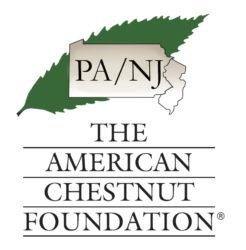[hr style=dashed-line margin_top=10 margin_bottom=10]
Genetic Transformation
[hr style=dashed-line margin_top=10 margin_bottom=10]
The first project to use genetic transformation for the creation of a blight-resistant American chestnut was started in the early 1990s by the New York Chapter of the American Chestnut Foundation (TACFNY) and focused on the work of scientists from the State University of New York’s Environmental Science and Forestry (SUNY-ESF) school.
The first step for genetic transformation is to figure out what gene or genes you want to put into your species of interest. When the TACFNY and SUNY-ESF project first began, the genes for blight-resistance were not yet know. For that reason, scientists began using genes from other species. These genes had been shown to confer broad resistance to several pathogens in other plant systems.
With current advances in sequencing technologies (link to sequencing section), however, blight-resistant genes from Chinese and Japanese chestnuts may soon be identified, cloned, and used in this process.
After you have your gene complex is created, the next step is to figure out a way to get it into your species of interest. There are a few ways to do this, but the easiest and current method used for chestnut is Agrobacterium-mediated transformation.
After the transformation is completed, the next stage is to get the tree out into the field. There are several steps involved in this, and the resulting treelets need to be handled very carefully until they are ready to be put outside. Transformed embryonic tissue need to first be multiplied and start turning into shoots. The resulting shoots are then rooted in tissue culture boxes, where only 10-60% of them may actually develop roots. After the rooting cycle, the treelets need to be acclimatized and readied for the outdoors.
[hr style=dashed-line margin_top=10 margin_bottom=10]
• For more information on the work of TACFNY and SUNY-ESF, please see this website:
http://www.esf.edu/chestnut/
• Researchers at the University of Georgia are also assisting in these efforts:
http://www.warnell.uga.edu/research/merkle/
